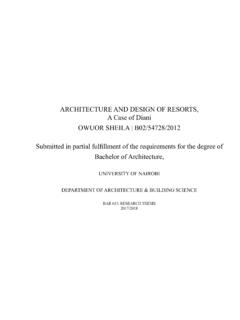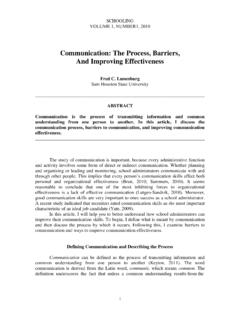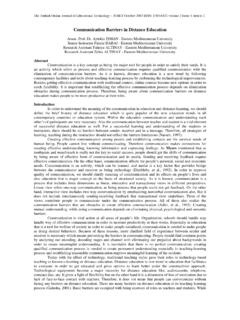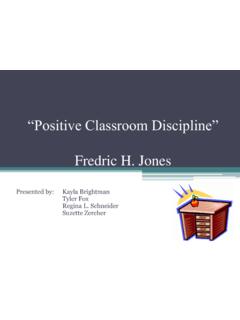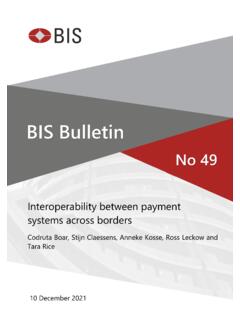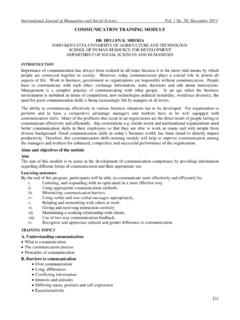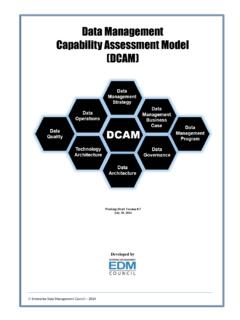Transcription of INTRODUCTION TO COMMUNICATION - University of Nairobi
1 1 INTRODUCTION TO COMMUNICATION DEFINITION OF COMMUNICATION COMMUNICATION is transfer of information from one person to another,whether or not it elicits confidence. But the information transferred must be understandable to the receiver Brown. 2. COMMUNICATION is the intercourse by words, letters or messages - Fred G. Meyer. We can now proceed to define COMMUNICATION from what we have seen above. To define means to give the precise and exact meaning of a word. The exact meaning of the word communicate is to share or to participate . The dictionaries say that COMMUNICATION is the transmission of a message or information by speaking or writing. Another dictionary declares that COMMUNICATION is giving or exchanging information, signals, messages by talk or gestures or writing. Yet another definition says that COMMUNICATION is social intercourse. COMMUNICATION is all this and much more. A good definition should not only give the precise meaning but also throw light on the scope of the word / expression.
2 COMMUNICATION is giving, receiving or exchanging ideas, information, signals or messages through appropriate media, enabling individuals or groups to persuade, to seek information, to give information or to express emotions. This broad definition includes body-language, skills of speaking and writing. It outlines the objectives of COMMUNICATION . It emphasizes listening as an important aspect of COMMUNICATION . barriers TO EFFECTIVE COMMUNICATION The barriers to COMMUNICATION and the ways and means of over coming them to achieve effective COMMUNICATION . 1. barriers to COMMUNICATION result in undesirable reaction and unfavourable response. 2. The COMMUNICATION exercise fails because the feed back is absent or falls short of expectation 3. barriers to COMMUNICATION are caused by environmental, physical, semantic, attitudinal and varying perceptions of reality I. Environmental and Physical barriers : (a) Time adopt appropriate fast channels of COMMUNICATION (b) Space maintain the distance in the COMMUNICATION exercise as determined by the situation (c) Place Avoid overcrowded incommodious and ill-lit, ill- ventilated places to achieve effective COMMUNICATION 2 (d) Medium Choose the appropriate medium oral / written (sign (audio/visual) medium.)
3 II. Semantic barriers : Connotational meanings of words Choose the correct and precise word depending on context and the receiver s felicity in the use of language. III. Cultural barriers : Understand and accept the cultural variations in individuals and groups. Appreciate them and adopt your COMMUNICATION style to them. IV. Psychological barriers : Try to understand the receiver s mental make up and attitudes. V. Perception of Reality: Try to understand the different levels of perceptions of a situation and an issue. Be open, flexible and transparent. MODELS OF COMMUNICATION WESTLEY AND MACLEAN S MODEL OF COMMUNICATION INTRODUCTION : In 1957 Westley and MacLean s model of COMMUNICATION is proposed by Bruce Westley (1915-1990) and Malcolm S. MacLean Jr (1913-2001). Being one of the creators of journalism studies, Westley served as a teacher at the University of Wisconsin, Madison, between 1946 and 1968. Malcolm was director of University of Journalism School (1967-74) and co founder of the University College at University of Minnesota.
4 This model can be seen two contexts, interpersonal and mass COMMUNICATION . And the point of difference between interpersonal and mass COMMUNICATION is the feedback. In interpersonal, the feedback is direct and fast. In the mass, the feedback is indirect and slow. Westely and Maclean realized that COMMUNICATION does not begin when one person starts to talk, but rather when a person responds selectively to his/her physical surroundings. This model considers a strong relation between responds from surroundings and the process of COMMUNICATION . COMMUNICATION begins only when a person receives message from 3 surroundings. Each receiver responds to the message they received based on their object of orientation. X1, X2, X3 and are news articles or information, Feedback (f), Clients (A), Reader or Audience (B) and Gate Keeper (c) Example: A Daily News Papers will receive many Press releases from Many Public Relations Agencies on behalf of their clients.
5 In this case, News paper will publish the selected Press release due to the space constraints. Then, Readers can directly respond to the client or they can respond to the News daily which published in the Newspaper. If Readers responded to daily News paper, it will communicate the feedback to concern PR Agency. X1, X2 and X3 are Press Release, Feedback (f), Clients (A), Reader (B) and Daily News Paper (Gate Keeper) (c) 1. Feedback Loop between Reader (B) and News Paper (C) fBC 2. Feedback Loop between News Paper(C ) and Client (A)- fCA 3. Feedback loop between Reader (B) and Client (A)- fBA. Merits and Demerits: This model accounts for Feedback. 4 It can account for different modes of COMMUNICATION , , for both interpersonal COMMUNICATION and Mass COMMUNICATION . It is a predictive model of COMMUNICATION and very descriptive also. It also account for non binary interactions, this means that it will remain good even for communications involving more than two sources.
6 Westley and Maclean COMMUNICATION model is Two Dimensional. It cannot account for multi dimensions; this means this model will not be applicable for typical COMMUNICATION events that involve broader context and wide range of COMMUNICATION messages. ARISTOTLE S COMMUNICATION MODEL Aristotle, a great philosopher initiative the earliest mass COMMUNICATION model called Aristotle s Model of COMMUNICATION . He proposed model before 300 who found the importance of audience role in COMMUNICATION chain in his COMMUNICATION model. This model is more focused on public speaking than interpersonal COMMUNICATION . Aristotle Model of COMMUNICATION is formed with 5 basic elements (i) Speaker, (ii) Speech, (iii) Occasion, (iv) Audience and (v) Effect. Aristotle advises speakers to build speech for different audience on different time (occasion) and for different effects. Speaker plays an important role in Public speaking. The speaker must prepare his speech and analysis audience needs before he enters into the stage.
7 His words should influence in audience mind and persuade their thoughts towards him. Example: Alexander gave brave speech to his soldiers in the war field to defeat Persian Empire. Speaker - Alexander Speech - about his invasion 5 Occasion - War field Audience - Soldiers Effect - To defeat Persia SHANNON AND WEAVER MODEL OF COMMUNICATION In 1948, Shannon was an American mathematician, Electronic engineer and Weaver was an American scientist both of them join together to write an article in Bell System Technical Journal called A Mathematical Theory of COMMUNICATION and also called as Shannon-Weaver model of COMMUNICATION . This model is specially designed to develop the effective COMMUNICATION between sender and receiver. Also they find factors which affecting the COMMUNICATION process called Noise . At first the model was developed to improve the Technical COMMUNICATION . Later it s widely applied in the field of COMMUNICATION .
8 The model deals with various concepts like Information source, transmitter, Noise, channel, message, receiver, channel, information destination, encode and decode. Sender : The originator of message or the information source selects desire message. Encoder : The transmitter which converts the message into signals. Note: The sender s messages converted into signals like waves or Binary data which is compactable to transmit the messages through cables or satellites. For example: In telephone the voice is converted into wave signals and it transmits through cables. Decoder : The reception place of the signal which converts signals into message. A reverse process of encode. 6 Note : The receiver converts those binary data or waves into message which is comfortable and understandable for receiver. Otherwise receiver can t receive the exact message and it will affect the effective COMMUNICATION between sender and receiver. Receiver : The destination of the message from sender.
9 Note : Based on the decoded message the receiver gives their feed back to sender. If the message distracted by noise it will affect the COMMUNICATION flow between sender and receiver. Noise: The messages are transferred from encoder to decoder through channel. During this process the messages may distracted or affected by physical noise like horn sounds, thunder and crowd noise or encoded signals may distract in the channel during the transmission process which affect the COMMUNICATION flow or the receiver may not receive the correct message. Note : The model is clearly deals with external noises only which affect the messages or signals from external sources. For example: If there is any problems occur in network which directly affect the mobile phone COMMUNICATION or distract the messages. Practical Example of Shannon-Weaver model of COMMUNICATION : Thomson made call to his assistant come here I want to see you . During his call, noise appeared (transmission error) and his assistant received I want only.
10 Again Assistant asked Thomson (feedback) what do you want Thomson . Sender : Thomson Encoder : Telephone (Thomson) Channel : Cable Noise : Distraction in voice Reception : Telephone (Assistant) Receiver : Assistant. Due to transmission error or noise, Assistant can t able to understand Thomson s messages. *The noise which affect the COMMUNICATION flow between them. Criticism of Shannon-Weaver model of COMMUNICATION : 1. One of the simplest model and its general applied in various COMMUNICATION theories. 2. The model which attracts both academics of Human COMMUNICATION and Information theorist to leads their further research in COMMUNICATION . 3. It s more effective in person-to-person COMMUNICATION than group or mass audience. 7 4. The model based on Sender and Receiver . Here sender plays the primary role and receiver plays the secondary role (receive the information or passive). 5.
